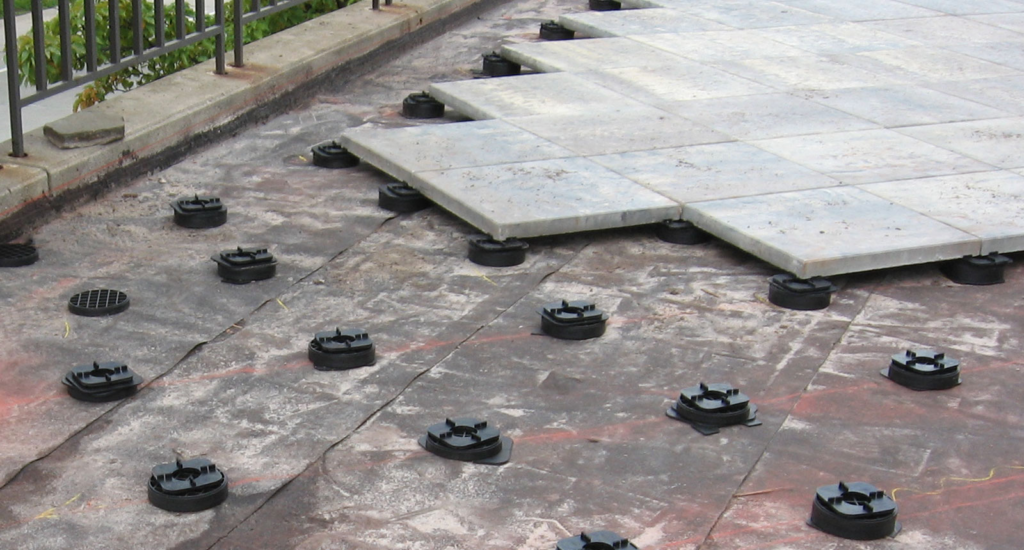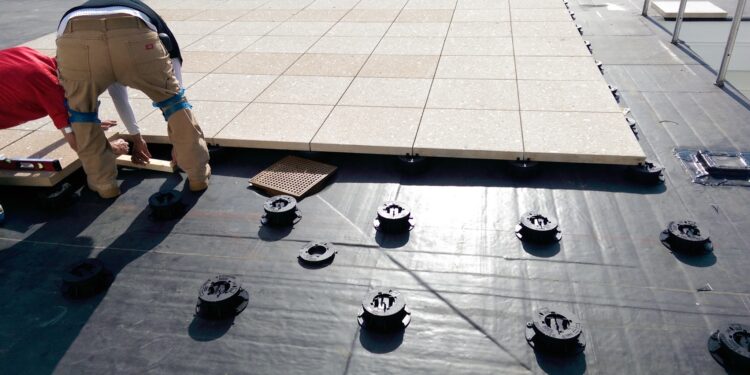The concept of roof landscapes has transcended mere utilitarian purposes, evolving into an oasis of sustainability and aesthetics in urban environments. These spaces not only provide a green retreat but also combat the urban heat island effect, purify the air, and manage stormwater. As such, the features that comprise rooftop gardens and usable outdoor spaces must adhere to stringent requirements. Among these are wind uplift paving systems, which are essential components in achieving a stable, durable, and safe roof landscape environment.
Understanding Wind Uplift Phenomena
Wind uplift is a force that can cause significant damage to roof structures and landscaping features. This phenomenon occurs when high winds flow over the surface of a building, creating a decrease in air pressure above the structure and an increase in pressure below. This difference in pressure can lead to the paving elements of a roof garden literally being uplifted and potentially becoming hazardous flying debris should they be not adequately secured.
The Role of Advanced Paving Systems
To counter this, modern wind uplift paving systems are engineered to provide secure solutions that can withstand the forces exerted by extreme weather conditions. These systems are a testament to the innovative strides in architectural and engineering design, where functionality seamlessly merges with aesthetic appeal.
Key Aspects of Wind Uplift Paving Systems
The cutting-edge technology behind wind uplift paving systems includes several key features that ensure the integrity and longevity of roof landscapes. These systems typically employ adjustable pedestals that allow for precise levelling of the paving slabs, which is critical to accommodate any irregularities in the roof’s surface.
Enhanced Safety and Performance
Moreover, these paving systems are enhanced with safety features like locking mechanisms that prevent individual pavers from shifting or becoming dislodged during high wind events. The interlocking feature not only improves safety but also ensures a continuous and appealing finish to the paved area. This is an essential consideration for commercial spaces where aesthetics are as critical as functionality.

Design Flexibility and Aesthetics
Design flexibility is another advantage of these innovative systems. They accommodate various types of pavers and finishes, facilitating creative and appealing rooftop designs. Moreover, the space created beneath the pavers allows for essential services like drainage, utilities, and irrigation systems to be hidden from view, preserving the aesthetics of the outdoor space above.
Sustainability is also a pivotal element in the design of wind uplift paving systems, with considerations for environmental impact and the need for materials that are both durable and recyclable. The advancements in these systems contribute to more sustainable building practices and help urban areas adapt to the pressing challenges of climate change.
Applications of Wind Uplift Paving Systems
While the foundational aspect of these paving systems is their ability to resist wind uplift, their applications extend to various scenarios. These systems are integral in the development of green roofs, terraces, balconies, and even podium landscapes. The versatility of these systems ensures that they meet not only the technical requirements of a variety of projects but also cater to the specific design visions of architects and designers.
Given the increasing frequency of extreme weather events, it is essential for builders and developers to consider the implications of wind uplift during the construction phase of any project. As urban landscapes continue to densify, the adoption of innovations in paving systems becomes not just a matter of preference but a crucial requirement for safety and sustainability.
The Advantages for Contractors and Owners
For contractors, working with reliable wind uplift paving systems implies easier installation and less maintenance over time, which translates into cost savings. For property owners, these systems bring peace of mind knowing that their rooftops are secure and can withstand the dynamic forces of nature without the need for frequent repairs or replacements.
Must Read the Story: Navigating Adelaide’s Market: A Buyers Agent Guide
Conclusion
The utilisation of cutting-edge wind uplift paving systems is crucial in the evolution of roof landscapes from mere architectural elements to sophisticated, multi-functional spaces. These systems serve as an unobtrusive foundation that supports all manners of roof landscaping applications, ensuring safety, stability, and style. As urban demands continue to challenge the boundaries of design and engineering, these advancements in paving technology provide an anchor, both literally and figuratively, for future rooftop developments.
In conclusion, roof landscapes have become essential components of modern urban design, offering environmental, social, and economic benefits. To harness these advantages fully, it is important to incorporate robust and reliable wind uplift paving systems as part of the overarching design. The right approach to paving can elevate the functionality, safety, and aesthetic appeal of any rooftop space, making it a cherished asset in the heart of the urban jungle.
In a world where innovation drives the future of construction, wind uplift paving systems represent an essential element of contemporary urban planning. Their role in safeguarding and enhancing roof landscapes is vital, enabling us to transform once barren rooftops into thriving green spaces that enrich our urban experience and contribute positively to the well-being of city dwellers.













